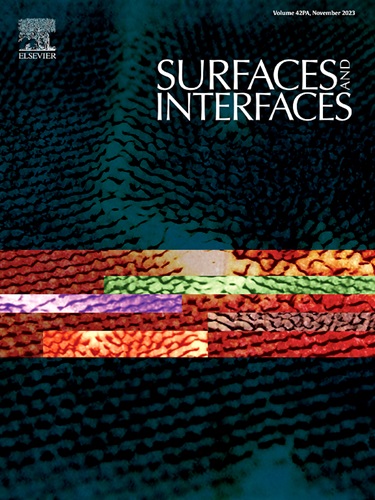Effect of micrometer bubble interfaces on the detection and measurement method of XLPE
IF 5.7
2区 材料科学
Q2 CHEMISTRY, PHYSICAL
引用次数: 0
Abstract
Hidden air bubble defects in the XLPE (Cross-Linked Polyethylene) insulation will seriously affect its electrical performance, which needs to be detected timely to ensure the safe and stable operation of the power system, but the interfaces between bubbles and XLPE may affect the detection. This paper proposes a novel method for high-precision detection and measurement method of micron-sized bubbles in XLPE based on THz time-domain reflection technology. To analyze the influencing factors limiting the high-precision detection and measurement of micron-sized defects, firstly, the propagation law of THz wave in XLPE with and without defects is studied, and the unipolar and bipolar pulses reflected at the defects are analyzed by overlap, and then a new method of micron-sized defects detection and measurement is proposed based on the overlap property of the bipolar pulses, and the relationship between the minimum detecting frequency and the size of the defects in the various detecting methods is determined. And the finite element method is used to simulate the THz detection of XLPE samples with defect thicknesses of 100, 7, 5, and 3 μm, respectively, and the proposed method is validated in conjunction with experiments. The results show that micrometer defects can be detected and measured with high precision using this proposed method, and the error can be controlled within 4.39%, which is significantly better than the conventional detection method. The proposed method can provide a new idea for non-destructive testing of insulation defects.

微米气泡界面对 XLPE 检测和测量方法的影响
交联聚乙烯(XLPE)绝缘中隐藏的气泡缺陷会严重影响其电气性能,需要及时检测以确保电力系统的安全稳定运行,但气泡与交联聚乙烯之间的界面可能会影响检测。本文提出了一种基于太赫兹时域反射技术的高精度检测和测量 XLPE 中微米级气泡的新方法。为了分析制约微米级缺陷高精度检测和测量的影响因素,首先研究了太赫兹波在有缺陷和无缺陷的 XLPE 中的传播规律,并对缺陷处反射的单极性脉冲和双极性脉冲进行了重叠分析,然后根据双极性脉冲的重叠特性提出了微米级缺陷检测和测量的新方法,并确定了各种检测方法中最小检测频率与缺陷大小的关系。并使用有限元法模拟了缺陷厚度分别为 100、7、5 和 3 μm 的 XLPE 样品的太赫兹检测,结合实验验证了所提出的方法。结果表明,使用该方法可以高精度地检测和测量微米级缺陷,误差可控制在 4.39% 以内,明显优于传统检测方法。该方法为绝缘缺陷的无损检测提供了新思路。
本文章由计算机程序翻译,如有差异,请以英文原文为准。
求助全文
约1分钟内获得全文
求助全文
来源期刊

Surfaces and Interfaces
Chemistry-General Chemistry
CiteScore
8.50
自引率
6.50%
发文量
753
审稿时长
35 days
期刊介绍:
The aim of the journal is to provide a respectful outlet for ''sound science'' papers in all research areas on surfaces and interfaces. We define sound science papers as papers that describe new and well-executed research, but that do not necessarily provide brand new insights or are merely a description of research results.
Surfaces and Interfaces publishes research papers in all fields of surface science which may not always find the right home on first submission to our Elsevier sister journals (Applied Surface, Surface and Coatings Technology, Thin Solid Films)
 求助内容:
求助内容: 应助结果提醒方式:
应助结果提醒方式:


